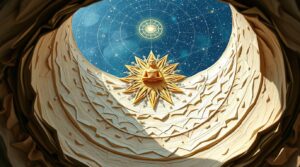What is Kundali? A Complete Guide to Birth Charts in Vedic Astrology
In the rich tapestry of Indian tradition and spirituality, astrology plays a profound role. One of the most essential elements in Vedic astrology is the Kundali, also known as a birth chart or natal chart. Whether you’re exploring marriage compatibility, career guidance, or personal growth, Kundali reading is often the first step in the journey of self-discovery. But what exactly is a Kundali, and why does it hold such importance?
In this article, we’ll dive deep into the meaning of Kundali, how it’s created, its components, and the different types and uses in everyday life—all written uniquely for your blog to ensure it stands out in SEO rankings.
What is a Kundali?
A Kundali is a celestial blueprint created at the exact moment of an individual’s birth. It is a detailed chart that maps the positions of planets, stars, and other celestial bodies relative to Earth at that specific time and place.
In Vedic astrology (also known as Jyotish Vidya), a Kundali serves as a foundational tool to understand a person’s character, life path, strengths, weaknesses, and future events. It provides insight into areas like health, wealth, marriage, career, and spiritual inclination.
How is a Kundali Made?
Creating a Kundali requires three key pieces of information:
- Date of Birth
- Exact Time of Birth
- Place of Birth
Using this data, an astrologer or astrology software generates the Kundali, which typically appears as a square or circular chart divided into twelve segments, each representing a zodiac sign or house.
These houses are populated by the nine primary celestial bodies used in Vedic astrology:
- Sun (Surya)
- Moon (Chandra)
- Mars (Mangal)
- Mercury (Budh)
- Jupiter (Guru)
- Venus (Shukra)
- Saturn (Shani)
- Rahu (North Lunar Node)
- Ketu (South Lunar Node)
Each of these celestial bodies holds unique meanings and influences, contributing to a person’s life story as outlined in their Kundali.
The 12 Houses of a Kundali and Their Meaning
The Kundali is divided into 12 houses, each governing a specific area of life. Here’s a brief overview of what each house represents:
- First House (Lagna/Ascendant): Self, personality, physical appearance
- Second House: Wealth, family, speech
- Third House: Siblings, courage, communication
- Fourth House: Home, mother, emotions
- Fifth House: Education, creativity, children
- Sixth House: Health, enemies, daily work
- Seventh House: Marriage, partnerships
- Eighth House: Inheritance, transformation, secrets
- Ninth House: Luck, spirituality, long journeys
- Tenth House: Career, reputation, public life
- Eleventh House: Gains, aspirations, friendships
- Twelfth House: Losses, foreign travel, liberation
The planetary placement within these houses at the time of birth defines the individual’s traits, tendencies, and potential life outcomes.
Types of Kundali in Vedic Astrology
There are different kinds of Kundalis based on the purpose and the system used. Here are some of the main types:
1. Janma Kundali (Natal Chart)
This is the most commonly used Kundali. It shows the planetary positions at the time of birth and is the foundation for all astrological interpretations.
2. Chandra Kundali (Moon Chart)
Here, the Moon’s position is considered the starting point instead of the Ascendant. It’s especially useful for understanding emotional nature and mental tendencies.
3. Surya Kundali (Sun Chart)
This chart uses the Sun’s placement as the base and is often used when the exact time of birth is unknown.
4. Navamsa Kundali
A divisional chart (D-9) used to assess the deeper aspects of life, especially marriage and spirituality. It provides finer details than the main birth chart.
5. Lagna Kundali
This focuses specifically on the Ascendant sign and is crucial for evaluating personality and physical appearance.
Key Components of a Kundali
Understanding the Kundali requires familiarity with its main components. Here are the essential elements:
1. Rashi (Zodiac Signs)
There are 12 zodiac signs, and each house in the Kundali is associated with one. These signs influence the traits associated with the house and the planets placed there.
2. Graha (Planets)
The nine planets affect different aspects of life depending on their strength, placement, and relationships with other planets.
3. Bhava (Houses)
As mentioned earlier, each of the 12 houses represents different life themes. The planets occupying these houses modify their significance.
4. Aspects (Drishti)
Planets influence other houses and planets based on the aspect or angle they form. These aspects can be beneficial or challenging.
5. Yogas
Yogas are special planetary combinations that create unique effects—both positive and negative. For example:
- Raj Yoga: Indicates success and authority
- Gaj Kesari Yoga: Wisdom and prosperity
- Kaal Sarp Dosh: Considered inauspicious if all planets fall between Rahu and Ketu
Importance of Kundali in Indian Culture
In India, Kundalis are more than just charts—they’re a part of tradition and important life decisions.
1. Marriage Compatibility
One of the most common uses is Kundali matching (Gun Milan) for marriages. Astrologers compare the bride and groom’s Kundalis to ensure compatibility in temperament, values, and future.
2. Career Guidance
Based on planetary strength in specific houses (like 10th for career), astrologers can suggest suitable professions or warn of obstacles in career paths.
3. Health Predictions
The 6th, 8th, and 12th houses, along with malefic planets like Mars and Saturn, help forecast potential health issues.
4. Timing of Events (Dasha System)
The Dasha system breaks life into planetary periods, each ruled by a planet. These cycles help predict favorable and unfavorable times for events like marriage, job changes, or investments.
Benefits of Kundali Reading
- Self-Understanding: Helps people know their strengths, weaknesses, and purpose.
- Life Planning: Offers guidance in major life decisions.
- Problem Solving: Identifies doshas (flaws) and suggests remedies.
- Spiritual Growth: Encourages deeper understanding of karma and life lessons.
Modern Kundali and Online Tools
Thanks to technology, Kundali creation and interpretation are now accessible online. Many platforms offer:
- Free Kundali generation
- Detailed reports
- Personalized predictions
- Remedies and mantras
However, while software-generated charts are useful, they should ideally be interpreted by a knowledgeable astrologer for accurate insights.
Common Misconceptions About Kundali
1. It’s All Fate
While Kundali reveals tendencies, it doesn’t mean life is predetermined. It shows probabilities, not certainties.
2. Only Believers Benefit
Even skeptics can use Kundali as a tool for reflection, much like a psychological personality test.
3. Kundali is Only for Hindus
Though rooted in Hindu culture, anyone can benefit from Vedic astrology’s insights, regardless of religion or background.
Conclusion
A Kundali is more than just a chart—it’s a cosmic mirror that reflects your soul’s blueprint. Whether you’re looking for guidance in relationships, career, or health, understanding your Kundali can offer clarity, confidence, and direction.
In a world full of uncertainties, the ancient wisdom of Kundali reading offers a timeless guide to navigating life’s journey. As Vedic astrology continues to gain global popularity, more people are discovering the power of this personalized cosmic map.


